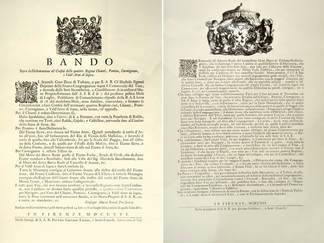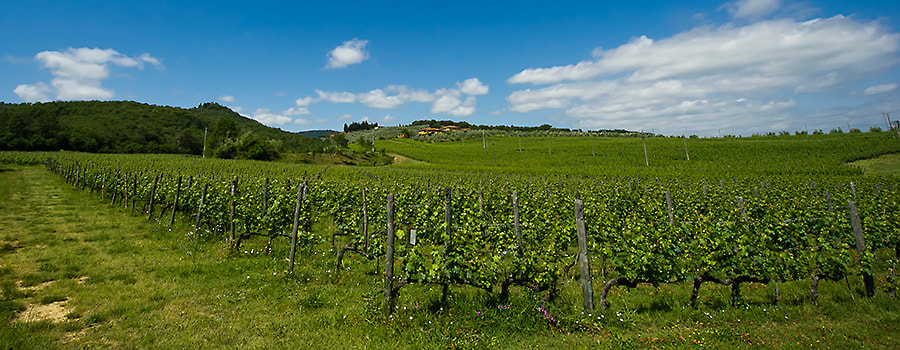The Petrolo Estate is run by Luca Sanjust of the historic Bazzocchi-Sanjust family. Petrolo extends over 272 hectares between 250 and 400 meters above sea level, in an area known since early '800 for its prestigious wines. The estate properties are set in the Val d'Arno Superiore among the hills of the "Chianti Colli Aretini" an area bordering the south-eastern part of Chianti Classico, on moderately loose-packed soil composed of rocky stratifications of claystone, shale and lime stone.
This part of Chianti, largely covered in woods, has always been farmed with vineyards and olive groves being the only cultivations fitting well in this land. A territory with a long history and an old vocation in the production of great wines. One can find trace of this in 1716 when Cosimo III de Medici, Great Duke of Tuscany, stated with an edict which areas had the most valuable productions of fine wine and quality olive oil. This edict recognized 4 areas, Chianti center (between Panzano and Greve), Carmignano (west of Florence), Pomino (east of Florence) and the Val d’Arno di Sopra (the western and eastern hills along the Arno river between Florence and Arezzo, where Petrolo belongs).
This part of Chianti, largely covered in woods, has always been farmed with vineyards and olive groves being the only cultivations fitting well in this land. A territory with a long history and an old vocation in the production of great wines. One can find trace of this in 1716 when Cosimo III de Medici, Great Duke of Tuscany, stated with an edict which areas had the most valuable productions of fine wine and quality olive oil. This edict recognized 4 areas, Chianti center (between Panzano and Greve), Carmignano (west of Florence), Pomino (east of Florence) and the Val d’Arno di Sopra (the western and eastern hills along the Arno river between Florence and Arezzo, where Petrolo belongs).
|
Petrolo's vineyards extend across 31 Ha of which 26 Ha are in production to date. With an altitude between 250 and 450 meters a.s.l. the vineyards grow over moderately loose-packed soil with rocky stratification of limestone, sand, clay stone and flakes of shale typical of the Chianti area. The vines are planted at an average density of around 5500 plants per hectare trained to produce very low yield around 25 Hl per hectare for a total of 600/650 Hl of wine.
The historical vinyard (picture to the right) of the winery was planted in 1947 by Gastone Bazzocchi, father and grandfather of the owners currently running the estate. The vineyard has always been the backbone and heart of Torrione, from 2006 the central rows are selected for the production of the Bòggina wine, the cru of Sangiovese of Petrolo. |
This vocation was confirmed one century later in 1834 by agronomist Giorgio Perrin, owner of Petrolo and member of the Accademia dei Gergofili of Florence. He celebrates Sangiovese and this land, especially that spot called Campo Asciutto (now Bòggina), explaining how it was common use at the time planting “French grapes” in Chianti to combine with Sangiovese, by virtue of a soil that manages to prevail over different varietals.
The Estate was acquired in the 40’s by the family Bazzocchi that followed up the tradition of carefully producing high quality wines with utter commitment. The pecularities of this area add to its value; the land of Petrolo, where vineyards, olive groves and woodscoexist, living side by side, forming with the soil a rich ecosystem that contributes to perfectly balance the different grape varieties. The vineyard (to the left) extends for 3 ha and was planted in 1990. Galatrona is the first Merlot vineyard that Petrolo planted. The Galatrona wine is produced from this vineyard since it's very first bottling. Part of the Galatrona vineyard, was planted in the 90's and extends for about 5 ha. Almost entirely made of Merlot plants, the vineyard holds a few experimentations of Cabernet Sauvignon, Cabernet Franc and Petit Verdot. The grapes are meant for the production of Galatrona. |
Excerpts and some pictures courtsey: http://www.petrolo.it/en
|
Copyright © 2014 The Wine Monk Pte. Ltd. All rights reserved
|






